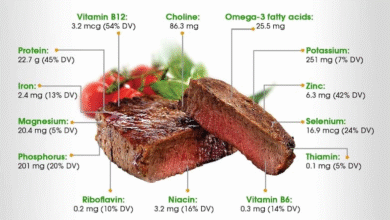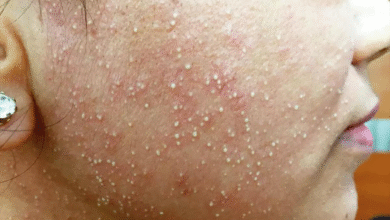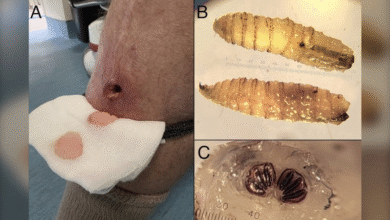Vibrio Vulnificus Infection: What You Need to Know

Vibrio vulnificus infection has emerged as a significant concern in Florida, where state health officials have reported eight deaths linked to this alarming “flesh-eating bacteria.” This dangerous pathogen has been identified in 13 cases across 11 counties, highlighting the need for awareness and vigilance regarding Vibrio infection symptoms, especially during the warmer months. With increases in coastal water temperature fueling the spread of these bacteria, communities must prioritize bacterial infection prevention, particularly among high-risk individuals like the elderly and those with underlying health conditions. As health advisories continue, it’s crucial to recognize the signs of necrotizing fasciitis, which can escalate quickly from minor wounds. Staying informed about health advisories in Florida is key to reducing the risk of serious infections from this deadly bacteria.
The recent uptick in cases of Vibrio vulnificus infection, often referred to as necrotizing fasciitis, underscores a growing public health threat linked to this species of bacteria. Known for causing severe soft tissue infections popularly described as flesh-eating, Vibrio infections can result from exposure to warm coastal waters or the consumption of raw shellfish. Residents and visitors in Gulf Coast states should be especially cautious as symptoms can escalate from mild to life-threatening within hours. Health advisories, such as those from Florida’s health department, aim to inform the public about the dangers of these bacterial infections and the importance of preventive measures. Recognizing early signs and seeking prompt medical attention can ultimately save lives in the face of these dangerous infections.
Understanding Vibrio vulnificus Infection
Vibrio vulnificus infection is caused by a bacteria that thrives in warm, coastal waters, particularly during the summer months. It is a member of the Vibrio family, which includes several other pathogenic species. This bacterium can enter the body through open wounds or by consuming contaminated seafood, particularly raw oysters. Individuals with underlying health conditions such as liver disease, diabetes, or those who are immune-compromised are at a significantly higher risk for developing severe symptoms from this infection. The concerning rise in reported cases underscores the urgent need for heightened awareness, especially in regions prone to warmer coastal waters.
Once the Vibrio vulnificus bacteria infiltrate the body, they can lead to serious conditions, notably necrotizing fasciitis, which is popularly known as a flesh-eating disease. Unfortunately, the effects of this infection can escalate quickly, often presenting with severe pain, fever, and swelling within a short period. As health officials report rising morbidity rates, it becomes crucial for communities to understand the potential dangers associated with exposure to contaminated waters or seafood.
Symptoms and Risks Associated with Vibrio Infections
Symptoms of Vibrio infections can vary based on the route of transmission. When the bacteria enter through an open wound, patients may initially experience intense pain, redness, and swelling at the site. Additionally, systemic symptoms like fever and chills may develop, indicating a serious health threat. For those who ingest contaminated seafood, particularly raw shellfish, gastrointestinal symptoms such as nausea, vomiting, and diarrhea can manifest, potentially leading to severe dehydration. Therefore, recognizing these symptoms promptly is pivotal for effective treatment.
Individuals with conditions such as chronic liver disease or a weakened immune system face a higher risk of severe outcomes from Vibrio infections. The mortality rate can be alarmingly high, especially in cases of bloodstream infections which can result in septic shock. Medical professionals advocate for heightened awareness about these risks, as early diagnosis and intervention are critical. Anyone experiencing symptoms, particularly after exposure to waters known to harbor Vibrio or after consuming raw seafood, should seek medical attention immediately.
Preventing Vibrio vulnificus and Related Infections
Preventing infections caused by Vibrio vulnificus focuses on several proactive measures, particularly for those at higher risk. Avoiding swimming in warm coastal waters with open wounds is paramount. Health officials recommend covering any cuts or abrasions with waterproof bandages before entering such environments. Furthermore, it is crucial to thoroughly cook shellfish, as raw consumption can lead to severe gastroenteritis or potential bloodstream infections. Public health advisories emphasize the importance of these precautions, especially during periods of elevated sea temperatures.
In addition to personal measures, local and state health departments play a vital role in monitoring Vibrio vulnificus cases and issuing advisories. The Florida Department of Health, for instance, frequently updates the public on infection rates and best practices to mitigate risks. Engaging with these resources ensures that individuals and communities remain informed about potential outbreaks and can take the necessary steps to protect themselves from these dangerous infections.
The Impact of Climate on Vibrio Infections
Climate change and rising water temperatures significantly influence the prevalence of Vibrio infections across coastal regions. Warmer waters create ideal conditions for the proliferation of Vibrio species, including Vibrio vulnificus, increasing the risk for outbreaks in previously uncommon areas. Moreover, environmental factors such as flooding and hurricanes, which stimulate additional Vibrio growth through nutrient runoff, raise concerns for public health during seasonal transitions. As a result, communities must adapt their prevention strategies to address the challenges posed by climate change.
Furthermore, increased plankton blooms, which carry Vibrio bacteria, have been linked to climate variations, further complicating the public health landscape. Continued research into the relationship between environmental changes and Vibrio proliferation is critical for developing effective strategies to combat infections. Public education campaigns focusing on these connections can help raise awareness about the risks associated with recreational water activities and seafood consumption during peak Vibrio season.
Understanding Necrotizing Fasciitis from Vibrio Infection
Necrotizing fasciitis, a severe manifestation of Vibrio vulnificus infection, involves rapid tissue destruction and poses a significant threat to affected individuals. Often referred to as a flesh-eating disease, this condition requires immediate medical attention. Symptoms typically escalate rapidly, starting with localized pain that may not initially seem severe but quickly becomes distressing. Any delay in seeking treatment can lead to dire consequences, making awareness of this condition vital to prompt intervention.
In cases of necrotizing fasciitis due to Vibrio, aggressive treatment is crucial. Physicians often employ a multifaceted approach, including surgical debridement to remove necrotic tissue and intravenous antibiotics to control bacterial spread. Patients with this condition face extended recovery times and serious complications, including amputation in severe instances. Therefore, ongoing education and training for healthcare professionals regarding vibrio-related infections and their potential to lead to necrotizing fasciitis are fundamental in improving patient outcomes.
The Role of Health Officials in Managing Vibrio Outbreaks
Health officials are pivotal in managing and mitigating the risks posed by Vibrio-related infections. With reports of rising cases, especially in coastal states like Florida and Louisiana, proactive measures are paramount. Local health departments monitor infection rates, issue health advisories, and implement community education initiatives to cultivate public awareness about Vibrio vulnificus. Through coordinated efforts, health agencies aim to reduce the incidence of severe infections and promote effective bacterial infection prevention strategies.
Furthermore, timely reporting of Vibrio cases provides essential data for epidemiological studies, enabling health experts to pinpoint trends, potential outbreaks, and risk factors. Through collaboration with federal entities such as the Centers for Disease Control and Prevention (CDC), local health officials can better understand the dynamics of Vibrio infections and facilitate effective public health responses. Engaging communities through awareness campaigns and preventive measures ensures that individuals are acutely aware of the risks associated with flesh-eating bacteria during peak seasons.
Regional Variability in Vibrio Infections
The distribution and incidence of Vibrio infections are notably influenced by geographic location. Regions along the Gulf Coast, such as Alabama, Florida, and Louisiana, have reported higher case counts due to the warm, brackish waters that facilitate the thriving of Vibrio vulnificus. Seasonal adaptations in temperature and salinity create optimal conditions for bacterial growth, resulting in a pronounced risk for populations residing in or visiting these areas. Therefore, coastal communities must remain vigilant during the warmer months and understand the localized nature of these infections.
In contrast, areas with cooler coastal waters typically report fewer cases of Vibrio infections. This regional variability underscores the necessity for tailored public health strategies that account for local environmental conditions and risk factors. Education focused on regional characteristics can help residents and tourists alike to make informed decisions regarding their safety while enjoying coastal activities, significantly mitigating their risk of developing serious bacterial infections.
Important Resources for Vibrio Infection Awareness
Access to reliable information is critical in combatting the rise of Vibrio infections. Public health organizations, including the CDC and local health departments, provide extensive resources regarding symptoms, prevention, and treatment of Vibrio vulnificus infections. These resources aim to educate the public on the appropriate steps to take if they believe they may have been exposed to the bacteria, thereby ensuring prompt and effective medical intervention.
Moreover, local health advisories often include updates on infection rates, recommendations for swimming and seafood consumption, and guidelines for vulnerable populations. By disseminating clear, actionable information, health officials play an essential role in fostering community awareness and promoting protective measures against Vibrio-related health risks. Engaging the public through workshops and informational campaigns can further enhance understanding and awareness of this serious public health concern.
Stay Informed: Preventing Vibrio Infections through Community Engagement
Community engagement is a fundamental aspect of preventing Vibrio infections. By fostering awareness and promoting safe practices, local health departments can empower residents to take control of their health. Workshops, informational flyers, and public service announcements about the risks associated with Vibrio vulnificus can significantly impact behaviors and reduce exposure risk. Engagement within the community helps to establish a protective environment where individuals are informed and can make educated choices regarding activities such as swimming and seafood consumption.
Additionally, community-led initiatives can facilitate discussions on best practices for bacterial infection prevention. Collaborating with local businesses, schools, and recreational organizations enables health officials to reach wider audiences, ensuring that everyone understands the importance of safety in areas prone to Vibrio infections. Through a collective effort, communities can become more resilient against outbreaks of flesh-eating bacteria and create a culture of health literacy among residents.
Frequently Asked Questions
What is Vibrio vulnificus infection and how does it occur?
Vibrio vulnificus infection is caused by a bacterium commonly found in coastal waters. It can enter the body through open wounds while swimming or can be contracted by consuming contaminated shellfish. This bacterium is associated with severe infections, including necrotizing fasciitis, often referred to as ‘flesh-eating bacteria.’
What are the symptoms of a Vibrio infection?
Vibrio infection symptoms can vary but often include high fever, intense pain, swelling, and redness at the site of infection, especially if opened wounds are exposed to contaminated water. If the bacteria enter the bloodstream, symptoms can escalate to fever, chills, septic shock, and blistering skin lesions.
How can one prevent Vibrio vulnificus infections?
To prevent Vibrio vulnificus infections, avoid swimming in open waters if you have open wounds and do not eat raw or undercooked shellfish, especially if you are immunocompromised or have chronic liver disease. Awareness of local health advisories is also essential for avoiding exposure.
What is the connection between Vibrio vulnificus and necrotizing fasciitis?
Vibrio vulnificus is a bacterium known for causing severe infections, including necrotizing fasciitis, which is often referred to as ‘flesh-eating bacteria’ due to its rapid destructive nature. Infections can occur when the bacterium enters the body through open wounds or cuts.
Why is there a Florida health advisory regarding Vibrio infections?
The Florida health advisory comes in response to an increase in reported cases of Vibrio vulnificus infections, including several fatalities. Authorities have issued warnings to inform the public about the risks associated with swimming in warm coastal waters and consuming raw shellfish.
How common are Vibrio vulnificus infections in the U.S.?
Vibrio vulnificus infections are considered rare, with the U.S. recording approximately 150 to 200 cases annually, primarily occurring in Gulf Coast states like Florida and Louisiana. Despite their rarity, the severity of these infections warrants awareness and prevention.
What treatment options are available for Vibrio vulnificus infections?
Treatment for Vibrio vulnificus infections may include antibiotics for serious cases. In instances of severe infection or necrotizing fasciitis, surgical intervention may be necessary to remove infected tissue. Early diagnosis and prompt treatment are crucial for improving outcomes.
Who is most at risk for Vibrio vulnificus infections?
Individuals most at risk for Vibrio vulnificus infections include older adults, those with compromised immune systems, and people with chronic liver disease. These groups should take extra precautions, especially in high-risk areas or during warmer months.
| Key Point | Details |
|---|---|
| Recent Cases | Eight deaths reported in Florida due to Vibrio vulnificus infection, with 13 confirmed cases across 11 counties. |
| 2022 Data | Florida reported 82 cases and 19 deaths last year. |
| Louisiana’s Situation | 17 reported infections and 4 deaths in Louisiana for 2025. |
| Vibrio vulnificus Background | Vibrio vulnificus is a bacterium found in coastal waters that can infect open wounds. |
| Environmental Factors | Warm waters and plankton blooms favor Vibrio growth, escalating infection rates. |
| Risk Groups | Older adults, immunocompromised individuals, and those with chronic liver disease are at higher risk. |
| Symptoms | Symptoms include high fevers, pain, swelling, and skin lesions following exposure to contaminated water. |
| Diagnosis & Treatment | Diagnosis through stool, wound, or blood cultures; treatment includes antibiotics and possibly surgery. |
| Preventive Measures | Avoid swimming with open wounds and consuming raw shellfish if immunocompromised. |
| Public Awareness | Officials urge the public to stay informed about Vibrio infections. |
Summary
Vibrio vulnificus infection is a serious public health concern that has led to multiple fatalities in Florida and Louisiana, emphasizing the need for awareness and preventive measures. As this infection tends to be most prevalent in coastal areas during warmer months, it’s crucial for individuals, particularly those at higher risk, to take precautions against exposure. Educating the public about symptoms, risk factors, and the significance of avoiding contaminated water can help mitigate infection rates and safeguard health.




